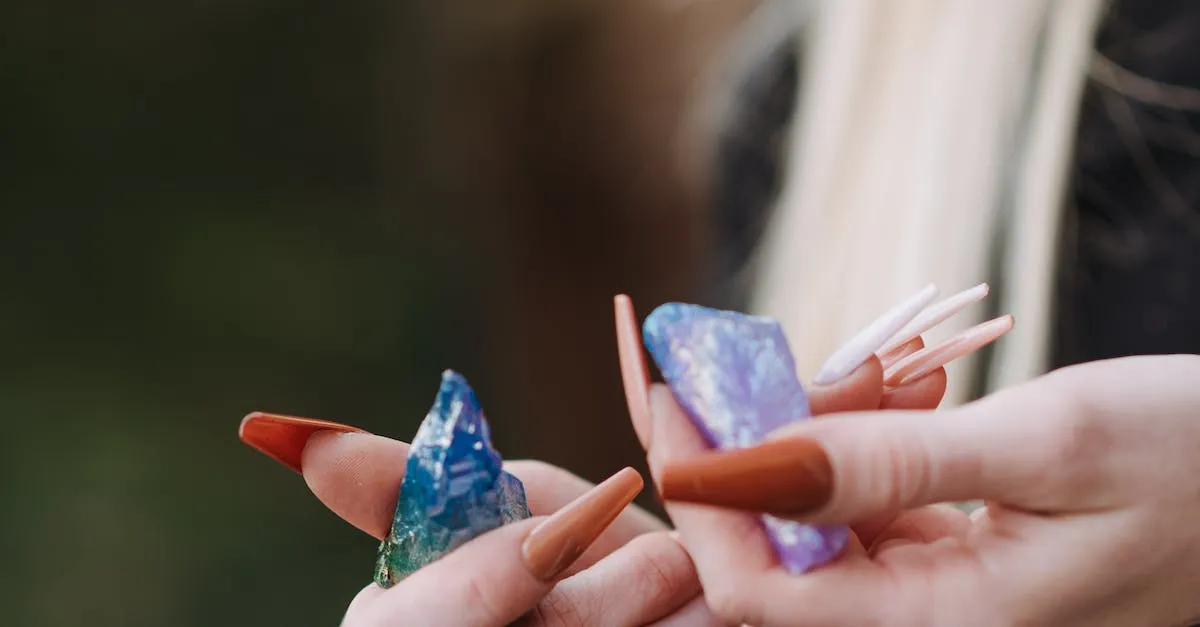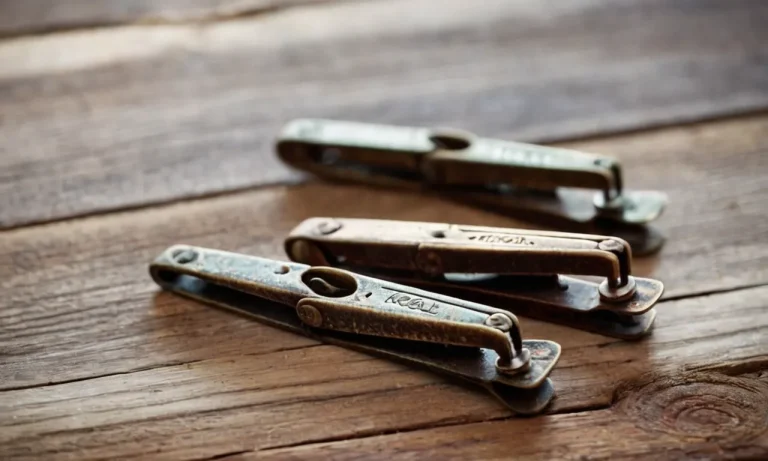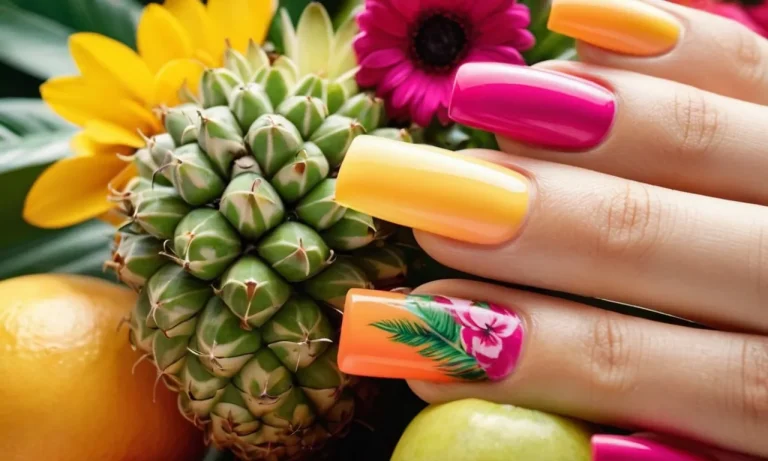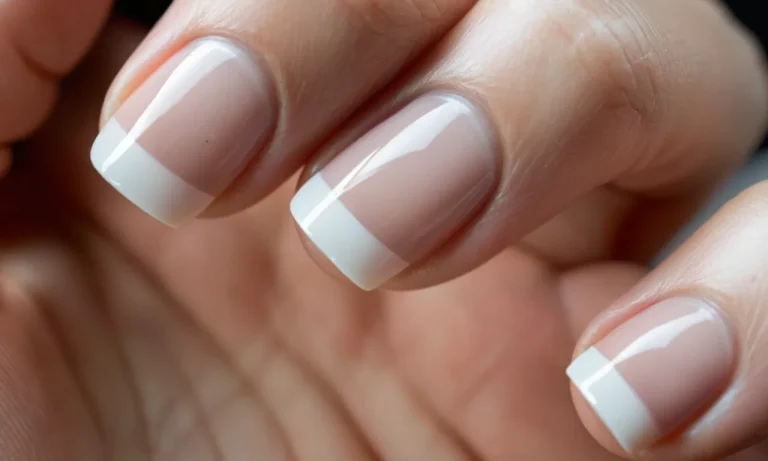Can Doctors Wear Nail Polish? A Detailed Look At Hygiene And Professional Standards
With the rise of nail art and intricate designs, more people than ever are expressing themselves through colorful fingernails. But for doctors and other healthcare professionals, navigating nail polish at work can be tricky.
If you’ve ever wondered whether doctors can wear nail polish on the job, this comprehensive guide will walk you through everything you need to know.
If you’re short on time, here’s a quick answer: Most hospitals and medical facilities prohibit doctors from wearing nail polish, artificial nails, and other enhancements. The main reason is infection control and hygiene standards. However, rules vary between workplaces and types of medical roles.
Infection Control Concerns with Nail Polish in Healthcare Settings
Spread of Germs and Bacteria
Healthcare workers interact closely with patients on a daily basis. Even small breaks in infection control practices can facilitate the spread of germs and bacteria between patients or from healthcare workers to patients.
According to research, over 1.7 million hospital patients contract infections during their hospital stay each year. Many of these could potentially be avoided with proper infection control procedures.
When healthcare workers wear nail polish or artificial nails, the extra length and gaps around nails provide places for germs and bacteria to hide and multiply. These microbes can then be transferred from patient to patient.
An analysis by the Centers for Disease Control and Prevention (CDC) found that healthcare workers with artificial nails were much more likely to harbor dangerous bacteria like Staphylococcus aureus on their nails and hands compared to those with natural nails.
Interference with Proper Hand Hygiene
According to the CDC, hand hygiene is the most important measure healthcare workers can take to avoid spreading infections. Frequent hand washing and use of alcohol-based hand sanitizers are vital. However, research shows that wearing nail polish or artificial nails may interfere with proper hand cleaning.
The extra layers of polish and acrylic make it harder for soaps and sanitizers to penetrate down to the nail bed. Bacteria and other contaminants can become trapped under layers of polish or attached to rough artificial nail surfaces.
One study found healthcare workers with nail polish had significantly more microorganisms present after hand washing compared to those with bare nails.
Chipped Polish and Artificial Nails
Nail polish and artificial nails also chip and crack more easily than natural nails. These cracks and gaps allow more places for bacteria to multiply. Research shows healthcare workers with chipped polish or artificial nails have higher counts of microorganisms present on their fingernails.
If bits of polish or acrylic break off into a patient’s wound during dressing changes or procedures, it can introduce bacteria and raise infection risks. This is why many hospitals and healthcare settings have banned artificial nails entirely and recommend that staff have short, neatly groomed natural nails with no polish.
Do Hospital Dress Codes Allow Doctors to Wear Nail Polish?
Strict No Polish Rules in Surgery and Patient Care
When it comes to surgeons and doctors who have frequent direct contact with patients, most hospitals prohibit wearing nail polish or have strict rules around it. This policy exists for good reason – chipped nail polish can harbor bacteria and risks infecting patients during medical procedures.
Any fingernail polish, especially chipped, poses an infection control risk. For this reason, surgeons and medical personnel performing invasive procedures are required to have clean, polish-free nails.
In fact, The Joint Commission, which accredits U.S. hospitals, mandates that surgeons scrub nails before surgeries and prohibits nail enhancements like artificial nails, overlays, and nail polish.
More Flexibility for Non-Clinical Staff
Doctors who do not regularly perform patient procedures or surgeries generally have more flexibility with nail polish. Psychiatrists, radiologists, and pathologists see patients but in a limited clinical capacity.
Hospital administrators and non-medical staff also do not typically interact with open surgical sites or wounds. For these reasons, nail polish may be allowed for doctors and staff not directly caring for patients. However, nude tones and neat, intact polish are still the norm.
Schools and government facilities may have stricter rules than private hospitals and clinics.
Trend Toward Natural Nude Tones
These days, more hospitals are relaxing nail polish rules for non-surgical staff. A 2021 survey by the Association for Professionals in Infection Control and Epidemiology found 31% of hospitals allow light colors. However, loud nail polish colors and designs are universally prohibited.
The trend is toward allowing natural, nude pinks and beiges. For example, the Cleveland Clinic changed its policy in 2015 to permit solid natural tones without glitter, jewels, or designs. This modernized policy helps female doctors express themselves while maintaining professional standards.
However, chipped polish in any color is still banned to minimize infection risks. Ultimately, many hospitals leave nail polish rules to the discretion of department heads for non-patient care personnel.
OSHA and CDC Nail Hygiene Recommendations for Healthcare Workers
Guidelines for Hand Hygiene and Glove Use
Proper hand hygiene is critical for healthcare workers to prevent the spread of infection. Both the Occupational Safety and Health Administration (OSHA) and Centers for Disease Control and Prevention (CDC) provide guidelines on hand hygiene for clinical settings.
OSHA recommends healthcare workers follow these steps for hand hygiene (source):
- Wash hands with soap and water when visibly dirty or contaminated with blood or other body fluids.
- If hands are not visibly soiled, use an alcohol-based hand rub for routinely decontaminating hands.
- Wash hands before eating and after using a restroom.
The CDC also advises proper hand hygiene before and after all patient contact, contact with potentially infectious material, and before putting on and upon removal of PPE, including gloves (source).
Cautions About Length and Enhancements
While well-manicured nails can make a good impression, very long nails or certain nail enhancements like gels or acrylics may interfere with good hand hygiene for healthcare workers.
According to the CDC, fingernails should be less than 1⁄4 inch long if working in a healthcare setting. Artificial nails have been implicated in harboriting more bacteria that can lead to infections (source).
OSHA also advises those with artificial nails to wear gloves for all patient care when hand hygiene alone is insufficient to prevent transmission of pathogens (source).
Suggestions for Safer Manicure Practices
If healthcare workers choose to wear nail polish or have enhancements, certain precautions can help reduce risk.
- Use a reputable salon that sterilizes all instruments properly.
- Select light colored polish that won’t obscure visualization of dirt underneath nails.
- Keep polish fresh and chips repaired to avoid bacteria getting trapped.
- Consider gloves when polish isn’t perfect.
Ultimately, most experts say keeping natural nails trimmed short is safest. But occasional, well-done manicures shouldn’t increase infection risk if hand hygiene is done scrupulously.
Doctors’ Views: Pros and Cons of Wearing Nail Polish on the Job
Arguments That Nail Polish Spreads Infection
Many doctors argue that wearing nail polish in a clinical setting can increase the risk of spreading infections. Here are some of their main concerns:
- Nail polish can chip and peel, allowing bacteria and fungi to collect underneath.
- Chipped polish makes proper hand hygiene more difficult, as soap and sanitizer may not penetrate under the peeled edges.
- Dark-colored polishes can camouflage dirt and debris under the nails.
- Applying and removing polish requires contact with shared tools like nail files and cotton balls, which can transfer germs.
Multiple studies have found higher bacterial counts on the nails of healthcare workers who wear polish. For example, a 2018 study found significantly more pathogenic bacteria under the nails of polished nurses compared to those with bare nails.
Points That Self-Care Boosts Doctor Wellbeing
On the other side of the debate, some doctors argue that occasional nail polish provides mental health benefits that ultimately make them better caregivers. Their reasoning includes:
- Wearing nail polish can represent self-care and boost confidence and morale.
- Occasional manicures help relieve stress and improve mood between long hospital shifts.
- Nail polish does not pose a high infection risk if applied and removed properly before shifts.
- Strict polish bans undermine female doctors’ professionalism and identity.
Surveys show higher career satisfaction in doctors who are allowed to wear nail polish. For instance, a 2022 study of female resident physicians found that those with access to minor self-care activities like nail polishing felt more supported in their programs.
Ultimately, doctors hold reasonable viewpoints on both sides of this debate. With proper precautions, occasional nail polish may provide personal benefits without putting patients at significant added risk.
More research is still needed to establish evidence-based polish guidelines for healthcare settings.
Special Considerations for Surgeons, Dentists, and Other Doctor Types
Strict Standards in the OR
Surgeons face some of the strictest standards when it comes to nail polish and overall hand hygiene. According to guidelines from the Association of periOperative Registered Nurses (AORN), surgeons must thoroughly wash hands and nails with an antimicrobial soap before putting on sterile gloves in the operating room.
Nail polish or artificial nails could allow bacteria and other contaminants to collect underneath, increasing infection risk.
Many hospitals prohibit any nail polish or enhancements for surgical staff per CDC guidelines. At minimum, polish must be fresh and free of cracks or chips which could tear gloves. Bright colors and glitter polishes are generally discouraged as they signal non-compliance.
A 2014 study found 74% of hospital policies restricted nail polish to light neutrals if allowed at all.
Concerns Specific to Dentistry
Dentists deal with a unique combination of infection control, fine instruments, and small operating areas. As such, most establish rigorous nail care policies for clinical staff.
A survey published in Infection Control Today showed 61% of dental practices prohibited any nail polish or enhancements. The remaining 39% restricted colors to soft pinks and neutrals. Reasons cited were:
- Chipped polish collects more bacteria inside cracks
- Dark colors obscure underlying dirt and debris
- Elaborately decorated nails appear less hygienic to patients
The ADA’s best practices recommend dental teams keep nails neatly manicured and less than 1⁄4 inch long. This allows thorough scrubbing underneath tips before procedures. As most dental tools are handheld and scaled to precision, longer nails increase chances of injury to patients’ teeth and gums.
More Flexibility for Psychiatrists and Pediatricians
Doctors further removed from surgical settings or sterile environments tend to have more leeway with nail polish. A pediatrician performing routine checkups generally uses only basic equipment like a stethoscope.
Additionally, a colorful manicure can build rapport with younger patients. Studies show children relate better to adults reflecting warmth, empathy, and creativity. Thus, both psychiatrists and pediatricians often incorporate nail art to appear more approachable.
However, most still avoid elaborate embellishments like acrylics or jewels. As patient perceptions on professionalism change, clinical standards continue adapting. In 2016, Britain’s National Health Service relaxed nail polish restrictions after finding no increase in hospital-acquired infections.
Conclusion
While most doctors err on the side of caution and go polish-free for work, attitudes toward nail hygiene in healthcare are gradually shifting. The choice ultimately comes down to individual hospital policy and each doctor’s comfort level.
With strict handwashing and safe manicure habits, there may be wiggle room for light, natural nail colors in some non-surgical specialties. But for surgeons, ER doctors, and other frontline roles, bare nails are still the gold standard for safety.







